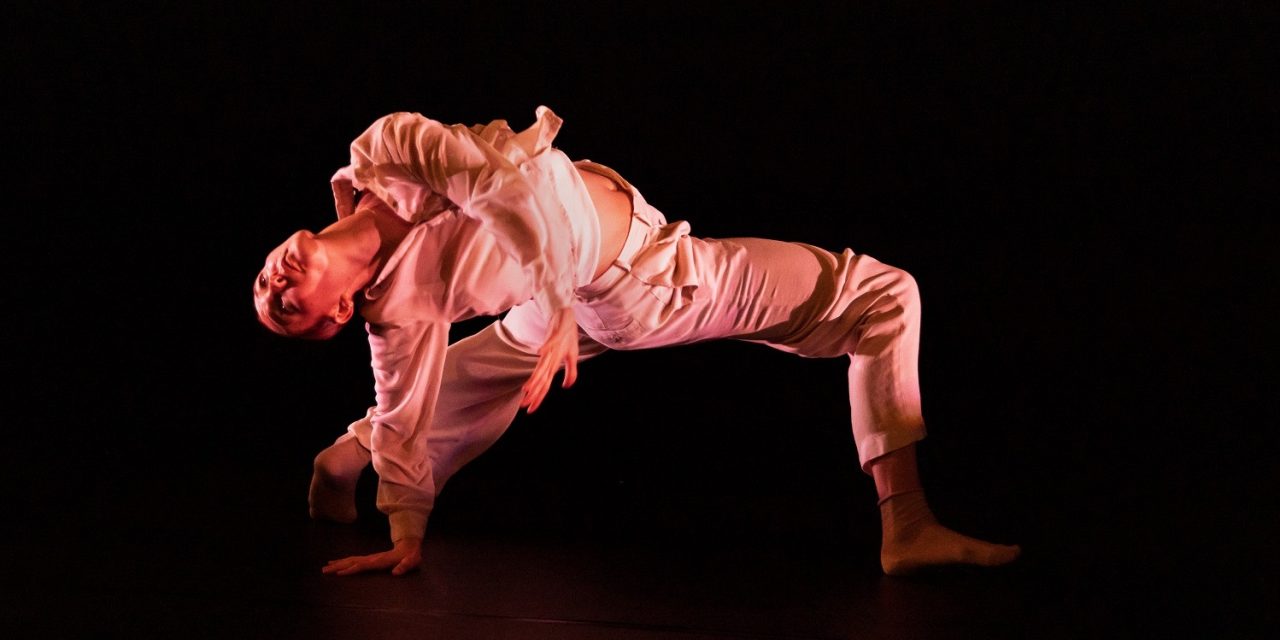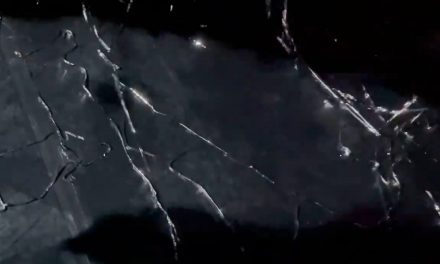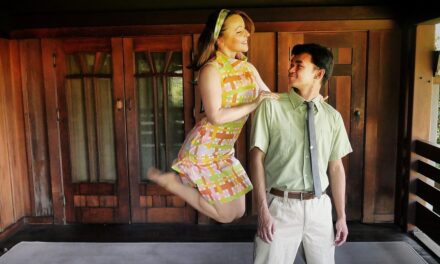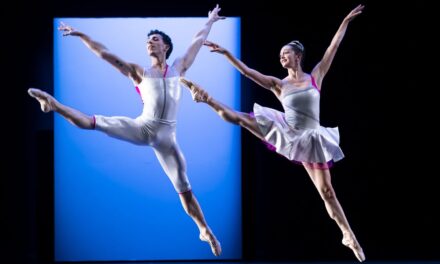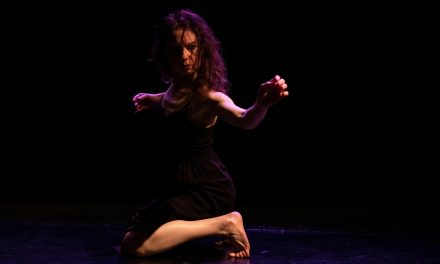This past weekend was the next to last for the 2022 Dance at the Odyssey series and revealed that Hannah Millar, Artistic Director of the Los Angeles based dance company Imprints, is a choreographer with a wonderfully refreshing and unique style. Millar is also excellent at telling a story via the dance theater genre. Millar’s evening length work, Let Us Bleed, Then Heal reveals her personal struggles and triumphs of the past seven years following her mother’s death. She does not, however, make us feel bad or pity her, but through dance, spoken word and theater, Millar has designed one path, the one she chose, that others might take inspiration from.
Millar stated that she has been working on this piece for over two years, and of course, part of that time was interrupted by the Covid pandemic. There is, however, not a hint of intrusion or signs of disruption throughout the 90 minutes of Let Us Bleed, Then Heal. Millar’s attention to detail, timing and the flow of action is only evident because there is not one movement or action that feels unnecessary or unimportant. One is left with a stunning work without seeing the process, like a beautifully written book after the editing and rewrites have been completed.
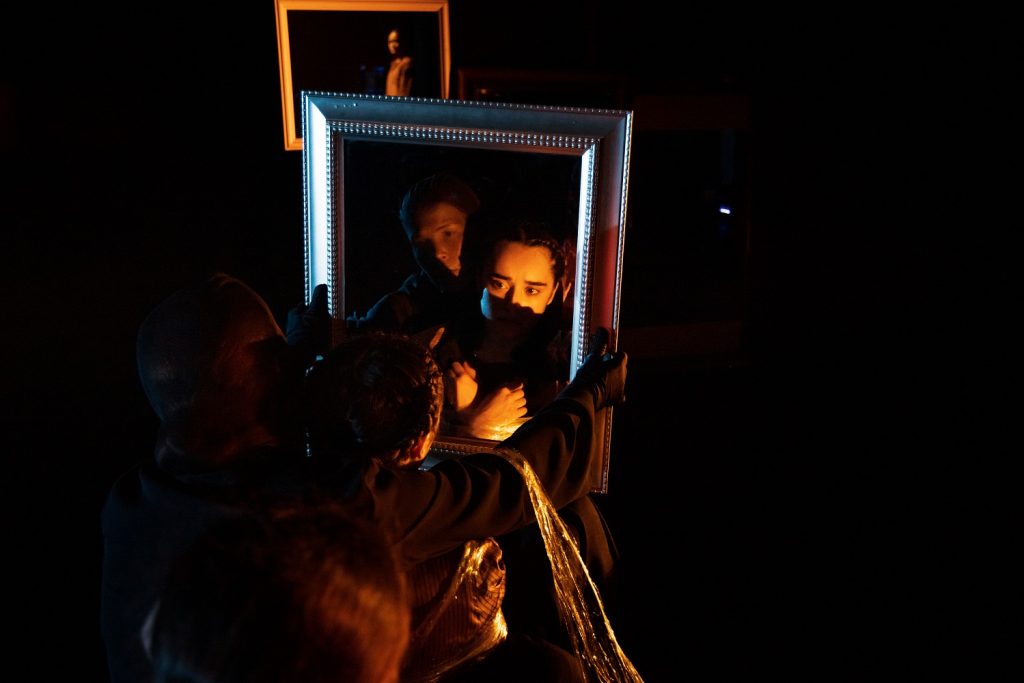
(L-R) Jordyn Maxfield, Halie Donabedian in Hannah Millar’s “Let Us Bleed, The Heal” – Photo by Taso Papadakis
Act I opens with a woman, Bailey Holladay, attending to the death of a loved one and as the work progresses into movement, we listen to Millar reading a letter to her departed mother. Millar’s use of different sizes of material, mirrors and other props often feels like a magic show as a large red cloth gets draped over one character only to reveal another once it is removed. A mirror becomes Millar’s exterior and interior personae yet guided, moved around, or influenced by the seen/unseen figures dressed in all black like the Koken in Japanese Noh Theater. The Koken are known as stage attendants that assist the players in numerous ways, such as the moving of props. Millar has taken this idea a step further. They take on unseen emotions that influence her characters both positively and negatively.
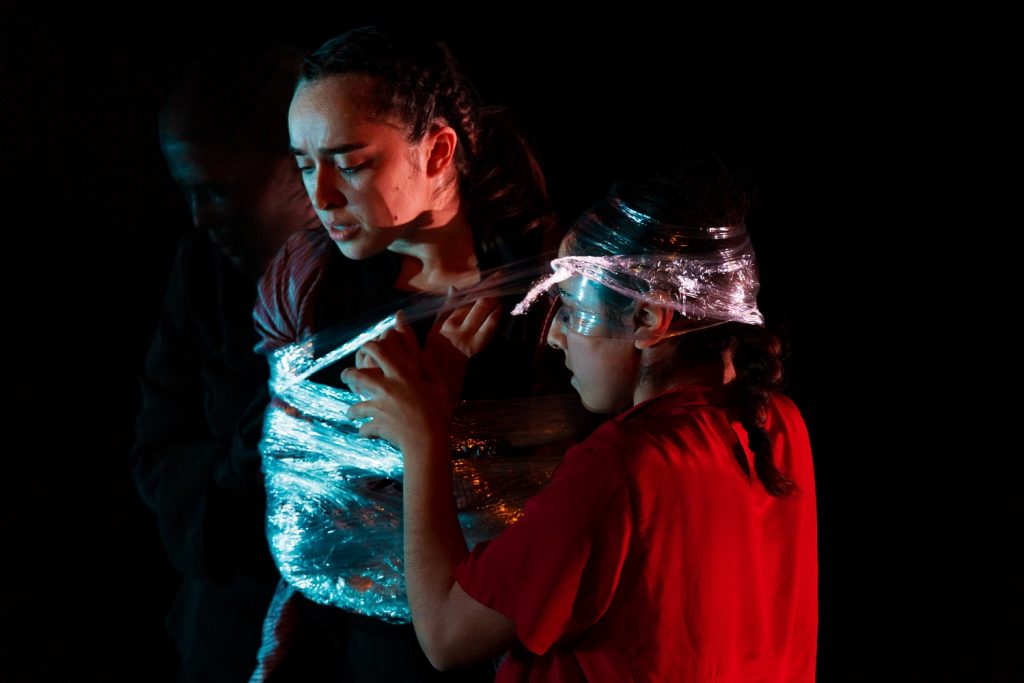
(L-R) Halie Donabedian, Julia Gonzalez in Hannah Millar’s “Let Us Bleed, The Heal” – Photo by Taso Papadakis
Millar shares the problems between she and her mother when she comes out as gay. He mother was very religious and appeared unable to accept her daughter’s life. She passed before the two women reconciled this very central issue, causing the next several years to become one of Millar’s darkest periods in her life.
Her movement style is difficult to categorize. Modern, ballet, contemporary, release technique; they are all there, but Millar has absorbed these styles into her body so that they appear unique to her, once translated onto her five incredible dancers: Halie Donabedian, Julia Gonzalez, Bailey Holladay, Jordyn Maxfield, and Nao Aizawa.
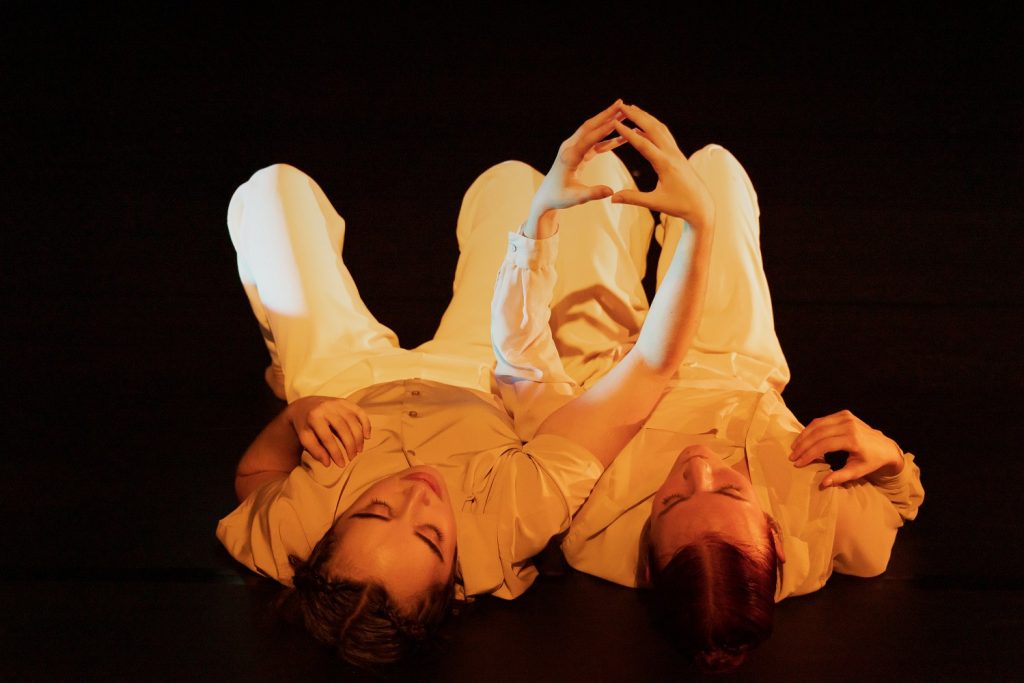
(L-R) Halie Donabedian, Bailey Holladay in Hannah Millar’s “Let Us Bleed, The Heal” – Photo by Taso Papadakis
Let Us Bleed, Then Heal is not a comfortable work to watch, but Millar has softened or smoothed off the rough edges so that it is a very enjoyable experience. Her demons have been dealt with and exorcised for Act II and although Millar does not release her grip on one’s emotions, the tension of that connection is eased and relationship between she and her mother is gorgeous to experience through the amazing performances of Bailey Holladay and Halie Donabedian. The trio with Donabedian, Julia Gonzalez and Nao Aizawa where Millar’s relationships with different women is explored was also beautifully performed. She see and feel her search for love, the rejection and most importantly, the acknowledgement of her part in the relationship failures.
The text was taken primarily from Millar’s journals; some were audio recordings, and other parts spoken live. One great touch to this work is that all the vocals are also translated into American Sign Language by Jill Nolen and dancers Aizawa, Gonzalez and Jordyn Maxfield.
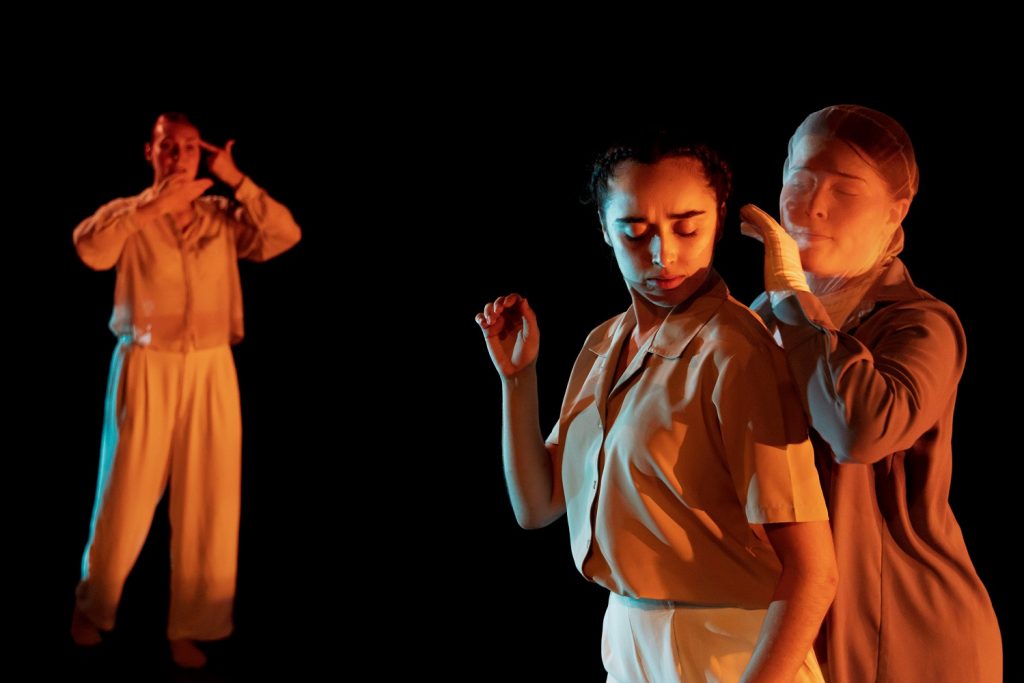
(L-R) Bailey Holladay, Halie Donabedian, Jordyn Maxfield in Hannah Millar’s “Let Us Bleed, The Heal” – Photo by Taso Papadakis
Kudos go out to Lighting Designer Bryanna Brock, Costume Designer Mary Leopo and to the often haunting – occasionally humorous Musical Composition by Michael Wall.
I would also like to thank The Odyssey Theatre Ensemble and Producer and Curator Barbara Mueller-Wittmann for a very successful 2022 Dance at the Odyssey series. There is one more event on July 16, 2022 featuring deufert&plischke/Germany which is free with reservations.
To learn more about Hannah Millar and Imprints Dance Company, please visit their website.
To learn more about the Odyssey Theatre Ensemble’s full season, please visit their website.
Written by Jeff Slayton for LA Dance Chronicle.
Featured image: Bailey Holladay in Hannah Millar’s “Let Us Bleed, The Heal” – Photo by Taso Papadakis

